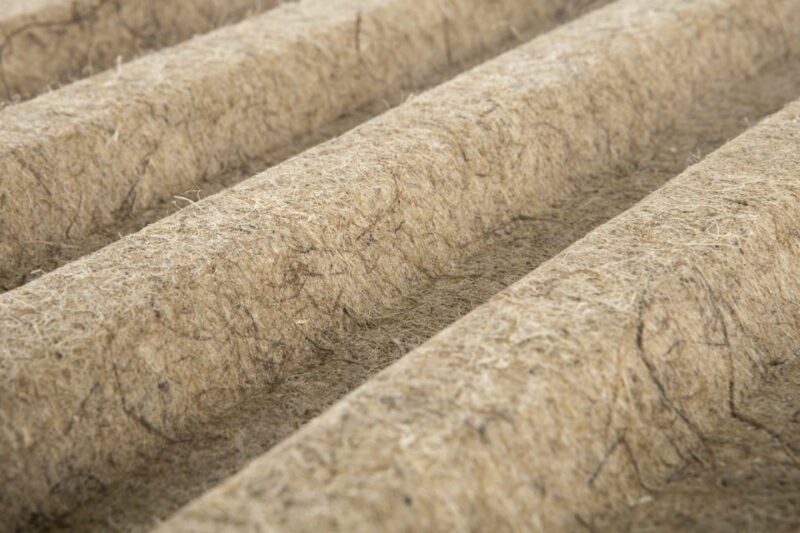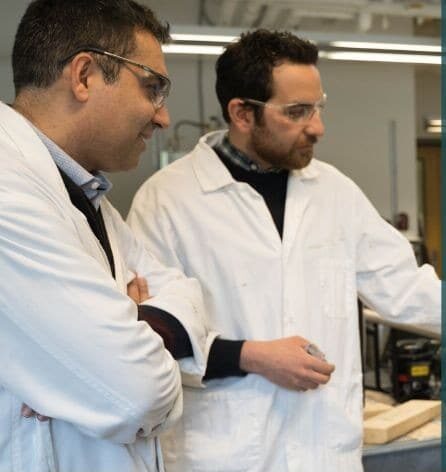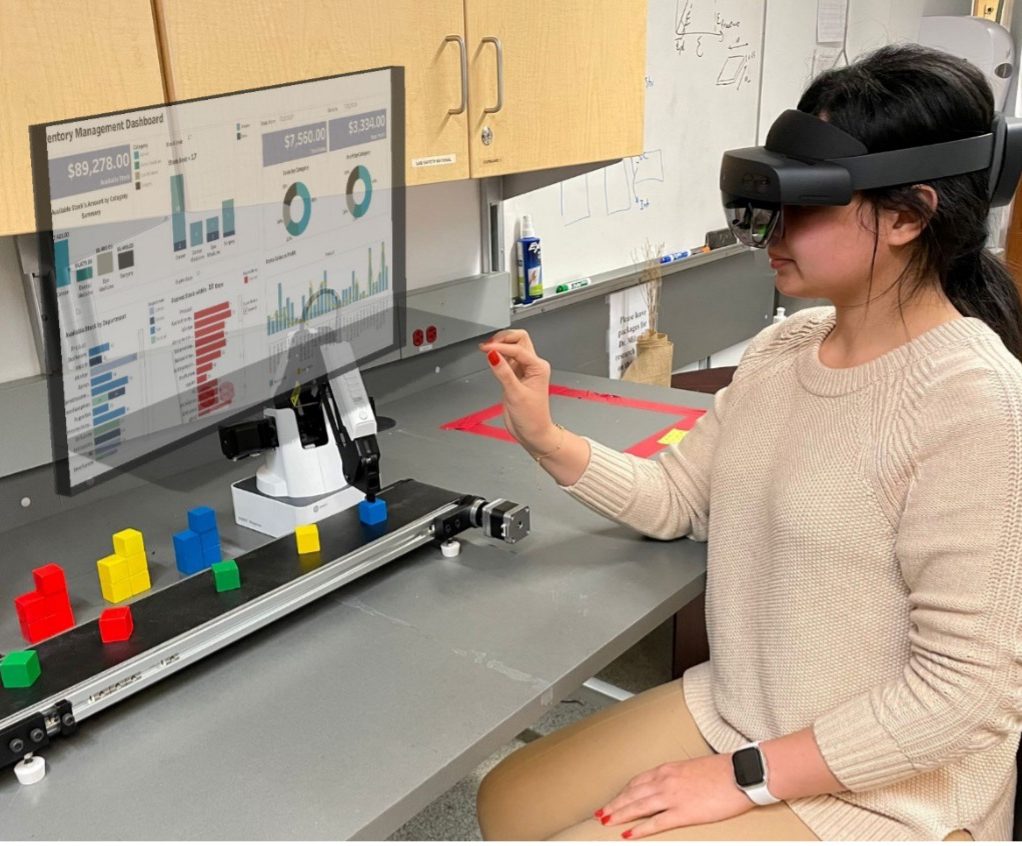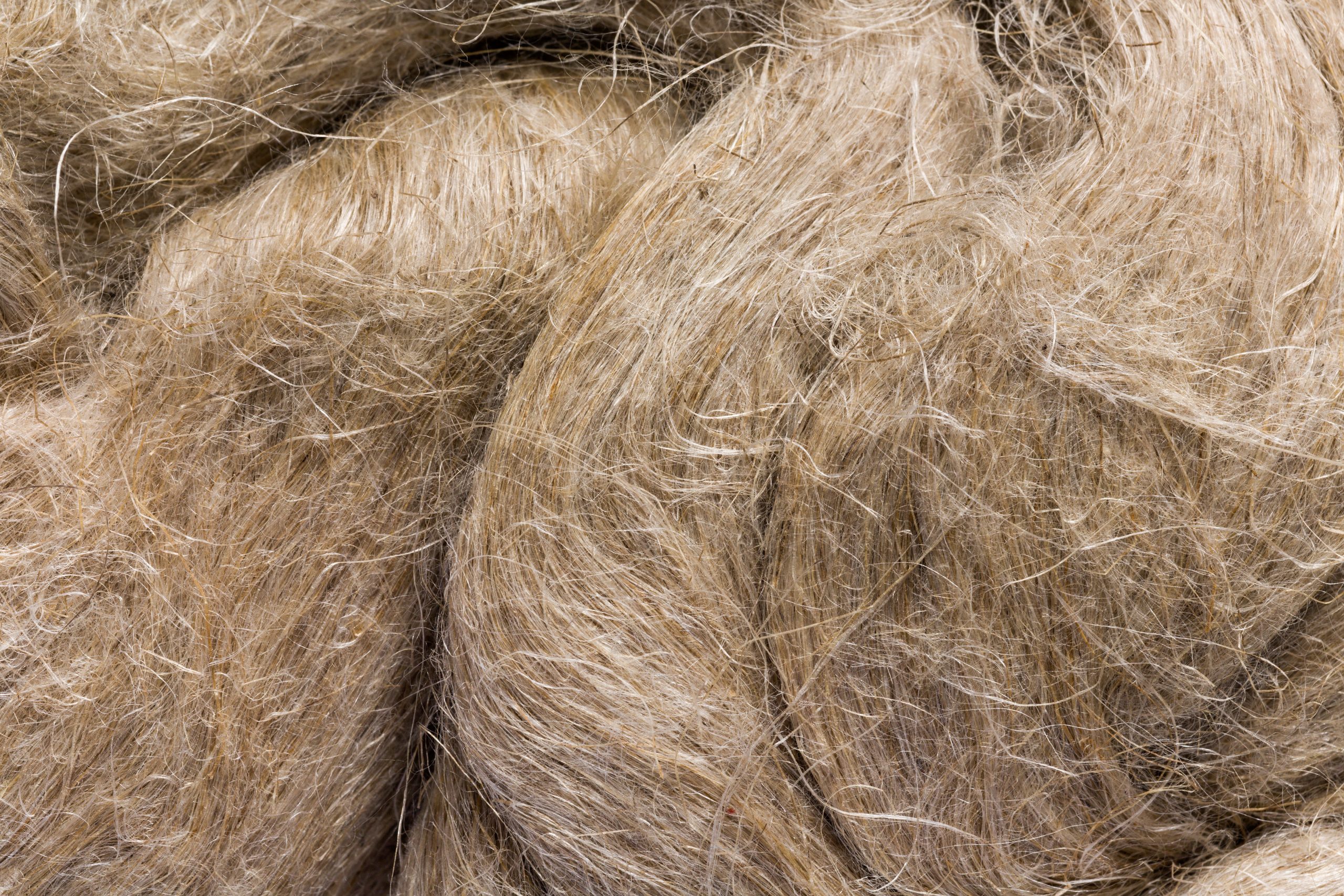The network students and faculty publish a book on biocomposites

Biocomposites and the Circular Economy provides up-to-date research results and insights from a multidisciplinary group of researchers who have been working together under the Biocomposites Research Network. The book will be a valuable reference resource for academic and industrial researchers, materials scientists and engineers, Industrial R&D, and manufacturers working in the research, development, and manufacturing of biocomposites in a broad range of application fields. You can find the book available for purchase here.
2024 MMRI Circular Economy Symposium
 Wednesday, February 21, 2024
Wednesday, February 21, 2024
Location
In-person: UNC200 on the UBC Okanagan campus in Kelowna, BC
Virtual: Over ZOOM
About the event
The event designed by the Materials and Manufacturing Research Institute (MMRI) will entail stimulating presentations by representative companies on sample new and emerging materials recycling technologies, as well as a series of rapid applied research presentations by students and faculty along with moderated Q&A sessions on a range of other circular topics.
To secure your spot (registration is free), please register by February 9th, 2024, as spaces are limited:
In-person Attendance Registration Form
Virtual Attendance Registration Form
"UBCO AR Solutions” is Selected as Finalist in Schneider Go Green 2022 Competitions

UBCO team, Iman Jalilvand, Niloofar Akbarian, Rohith JK, and Debangsha Sarkar, passed Schneider Go Green North America semi-finalist under supervision of Dr. Abbas Milani and Dr. Apurva Narayan and is selected among those advancing to the next round in the challenge to compete in the Regional Finals.
The proposed project aims to provide the AR-based solution to optimize the workflow in inventory management systems by minimizing total costs and time resulting in smarter warehouse management in the supply chain. The proposed solution will provide additional insight for operators in warehouse centers by illustrating a small-scale digital twin of the inventory management system.
Biocomposites Research Seminar Event

Thursday, April 29, 2021, 1:00-3:30 pm PST
Online via Zoom – Register here
- Biomass Supply Chain: A Vital Aspect of Bio-Projects – Dr. Taraneh Sowlati, Professor, Department of Wood Science, University of British Columbia
- Monomers, Biopolymers, and Bio-based Materials from Renewable Resources – Dr. Aman Ullah, Associate Professor, Department of Agricultural, Food & Nutritional Science, University of Alberta
- Waste Valorization and CO2 Reduction in Cementitious Composites – Dr. Cristina Zanotti, Assistant Professor, Department of Civil Engineering, University of British Columbia
- When Old Dogs Learn New Tricks: The Blending of Disciplines in the Furtherance of Natural Fiber Research – Dr. Grant Bogyo, President , Dr. Grant R Bogyo Inc.
- Organic Composites for Building Applications – Mr. David Derbowka, CEO, Passive Remediation Systems Ltd
- Reactive Extrusion of Biopolymers – Dr. Praphulla Tiwary, CEO, Plantee Bioplastics Inc.
Advanced Functional Materials from Forest Biomaterials

Wednesday, November 27, 2019 | 2:00-3:00 pm | EME 2111, UBC Okanagan
Ning Yan
Professor
Department of Chemical Engineering and Applied Chemistry,
University of Toronto
Summary of the talk
There is a growing interest in deriving products and functional materials from renewable feedstock to lower our reliance on fossil fuel while reducing environmental impact. My research team has done extensive research in developing light weight biocomposites, bio-based adhesives, resins, polyols and foams using biomass material as the starting material.
By taking advantage of some distinctive properties of nanocrystalline cellulose, nanofibril cellulose, and lately, novel lignin containing nanofibril cellulose, we have developed various functional materials and industrial targeted bio-based composites for applications in automotive, construction, energy storage and electrochemical sensors with excellent performance. An overview and some latest findings from our research activities will be presented.
Dr. Ning Yan holds a Distinguished Professorship in Forest Biomaterials Engineering at the Department of Chemical Engineering and Applied Chemistry in the University of Toronto. She was also an Endowed Chair in Value Added Wood and Composites. Dr. Yan is currently the Director of the Low Carbon Renewable Materials Centre in the Faculty of Applied Science and Engineering. Dr. Yan has more than150 peer-reviewed journal papers, 7 patent applications. She is an international expert on forest biomaterial science and bio-based products and has won numerous prestigious awards for her research excellence including the Early Researcher Award, Connaught Innovation Award, and NSERC Discovery Accelerator Supplements Award. She obtained her Ph.D. from the Department of Chemical Engineering and Applied Chemistry of the University of Toronto in 1997.
UBC engineers create ways to keep stone waste out of landfills
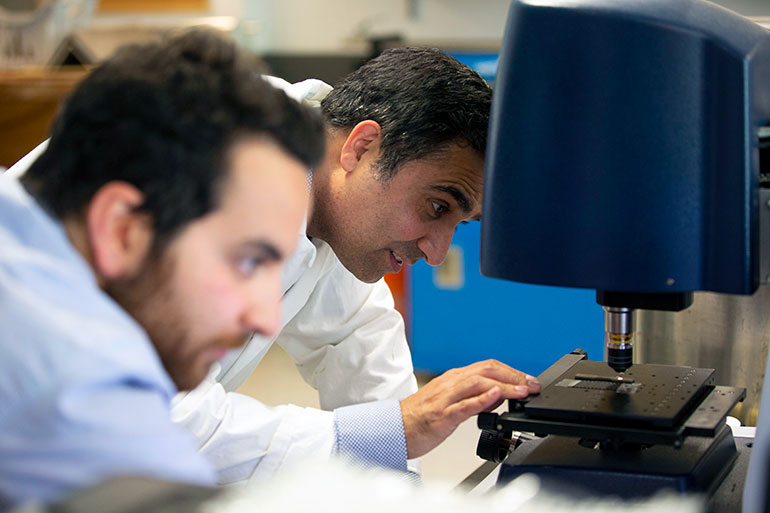
Using polymers and natural stone slurry waste, researchers at UBC Okanagan are manufacturing environmentally friendly stone composites.
These new composites are made of previously discarded materials left behind during the cutting of natural structural or ornamental stone blocks for buildings, construction supplies or monuments. While reusing the waste material of natural stone production is common in cement, tile and concrete, adding the stone slurry to polymers is a new and innovative idea, explains School of Engineering Professor Abbas Milani.
A growing industrial demand for multifunctional bio-friendly raw materials is pushing researchers to develop value-added and energy-saving biocomposites and processes, he explains.
“Because the slurry is a waste material, it comes at a lower cost for recycled composite production,” says Milani, director of UBC’s Materials and Manufacturing Research Institute (MMRI)
Milani and his colleagues recently received UBC eminence funding to establish a cluster of research excellence in biocomposites. The cluster will develop novel agricultural and forestry-based bio and recycled composites to minimize the impact of conventional plastics and waste on the environment.
The powdered stone waste used in the project provides flexibility to the new particulate polymer matrix composite. It can be mixed at different ratios into the finished product through appropriate heat or pressure to meet structural requirements or aesthetic choices, defined by industry and customers.
“This green stone composite can easily be integrated into a variety of applications,” says UBC Research Associate Davoud Karimi. “These composites can be used in decorations and sanitation products ranging from aerospace to automotive applications.”
The researchers varied the amount of stone added to the composites then tested several parameters to determine strength, durability and density along with thermal conductivity. The molding and mechanical tests were conducted in the Composites Research Network Okanagan Laboratory with collaboration from the MMRI.
By adding the stone waste to the composites, researchers determined that it not only increased the virgin polymer’s strength and durability, but the composites’ conductivity increased proportionally based on the amount of stone added.
“The increased strength is important, but the increased conductivity (up to 500 per cent) opens a huge door to several new potential applications, including 3D printing with recycled composites,” explains Milani.
“Any time we can divert waste from landfills and generate a product with the potential of economic benefit is a win-win,” Milani adds. “We hope that these sorts of products, that are carefully designed with the aid of multi-disciplinary researchers focused on 3R measures (repairable, reusable, and recyclable), can significantly contribute to the economy of our region and Canada as a whole.”
The research was funded by the Natural Sciences and Engineering Research Council (NSERC) and the National Research Institute for Science Policy (NRISP). It was recently published in two prestigious journals Composite Structures and Composites Part B: Engineering.
UBC study finds health isn’t the only issue with bacteria growth

Microorganisms growing inside aging buildings and infrastructure are more than just a health issue, according to new research from UBC Okanagan.
The research, coming from the School of Engineering and biology department, examined the impact of fungal mould growth and associated microbes within structures on university campuses. The study focuses on the observed biodeteriorative capabilities of indoor fungi upon gypsum board material (drywall) and how it affects a building’s age and room functionality.
Assistant Professor Sepideh Pakpour says fungal growth significantly affected the physical (weight loss) and mechanical (tensile strength) properties of moisture-exposed gypsum board samples. In some cases, tensile strength and weight of some boards decreased by more than 80 per cent.
And she notes the issue of fungal growth, intensified by climate change, is two-fold.
“Increasing flooding and rainfall related to climate change is aiding fungi to grow more rapidly, causing degradation of the mechanical properties of buildings and infrastructure,” she says. “Not only are the fungi breaking down the integrity of our buildings, but their proliferation is increasing health hazards for the people who live and work in these buildings.”
The researchers also looked at other factors that can impact microbial growth including temperature, humidity, dustiness and occupancy levels—the more people, the quicker it can grow
According to the study, drywall experienced a significant effect on its mechanical properties when microbes were present. If the microbes were bolstered by moisture, the drywall’s ability to withstand breakage when under tension dropped 20 per cent. Older buildings, on average, exhibited higher concentrations and types of fungi in the air, leading to higher mould coverage and biodeterioration on the drywall.
“Our findings would suggest a critical need towards multi-criteria design and optimization of next-generation healthy buildings,” explains Pakpour. “Furthermore, we hope this study will enable engineers, architects and builders to develop optimal designs for highly microbial-resistant building materials that will decrease long-term economic losses and occupant health concerns.”
The inter-disciplinary research was overseen by UBCO Biology Professor John Klironomos, Professor Abbas Milani, director of the School of Engineering’s Materials and Manufacturing Research Institute, and Pakpour, who supervised the microbial and material degradation analyses conducted by their doctoral student Negin Kazemian.
The researchers plan on turning their attention next to the exposure levels of airborne microorganisms and possible remedies.
The latest study, partially funded by a Natural Sciences and Engineering Research Council of Canada grant, was published in PLOS One, a peer-reviewed, open-access scientific journal.
Aerogels and Aerogel Composites: From Thermal Insulation to Battery Applications

Wednesday, April 3, 2019 | Time: 9:30-10:30 AM | Room: EME 2131, UBC Okanagan
Dr. Barbara Milow
German Aerospace Center
Institute of Materials Research
Department of Aerogels and Aerogel Composites
Summary of the talk
Aerogels are high-performance porous materials synthesized via sol-gel processes. The morphology of aerogels leads to a unique combination of materials properties as it is built by interconnected nanometer scaled particles and pores. Aerogels possess extremely high porosities of up to 99.9% and high surface areas of up to 3300m²/g. Thanks to morphology aerogels are super insulating materials, deliver ultra-low densities and can act as selective adsorbents. To improve the low mechanical strength diverse combinations with further materials for reinforcement are suitable.
For many years a team of scientists and technicians works on Aerogels and Aerogel Composites at the German Aerospace Center (DLR), Institute of Materials Research, in Cologne, Germany. R&D is focused on various applications including thermal insulating for high temperature applications and even under cryogenic conditions, VOC, CO2 and humidity absorption, foundry applications, lightweight construction, new high efficient battery concepts and further more. An interesting selection of these research efforts will be presented.

